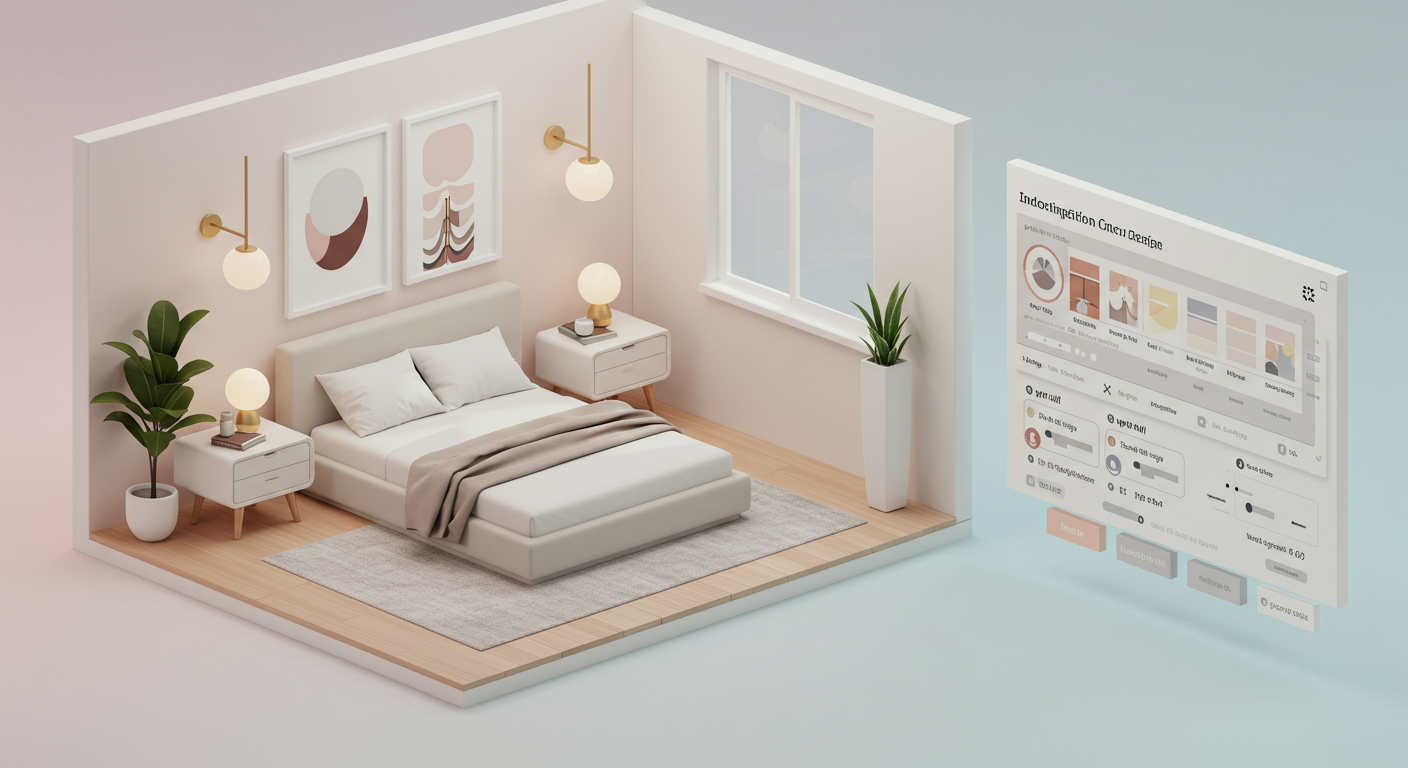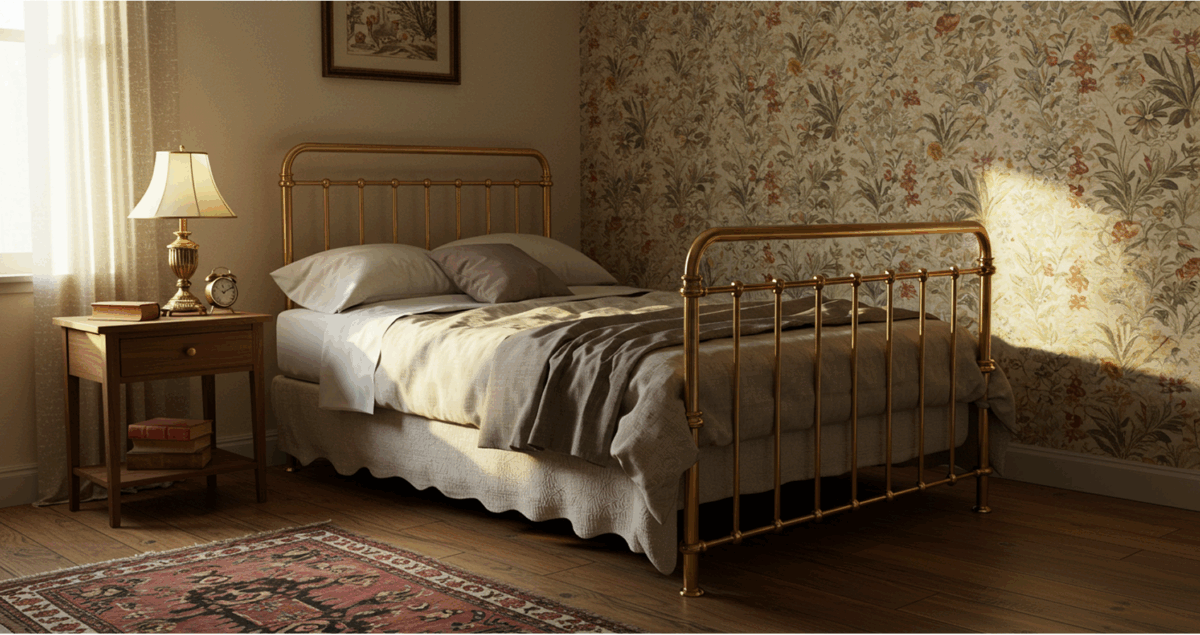Sleep Talk Blog, Industry News, Inspire me
How to Use AI Room Design Tools: A Beginner's Guide to Virtual Decorating
Table of Contents
AI room design tools have become a game-changer in interior design. About 41% of interior design professionals use these tools today. That's almost half the industry, and experts expect this number to grow by a lot in the next few years.
Many people feel overwhelmed by interior design - and that's perfectly normal. The good news is that free AI room design tools are now available to everyone online. You can try an AI room design app or upload photos to get design suggestions. These tools have made virtual decorating available to anyone who wants to try it.
The benefits are easy to see. IKEA's Life at Home Report shows that 40% of people feel more relaxed and happy in spaces that are clutter-free and well-designed. AI room interior design tools let you try new styles and ideas you might hesitate to test in real life. You can create your perfect space without spending a lot of money upfront.
Let's walk through everything you need to know about using AI to change your living spaces. We'll cover picking the right tools and creating beautiful virtual designs you can make real. Want to see how technology can help you become your own interior designer?
What Are AI Room Design Tools?

AI room design tools are a breakthrough in interior design. They use advanced algorithms that change how we see and create living spaces. These digital platforms analyse huge amounts of design data, your priorities, and spatial arrangements to create tailored design recommendations within minutes.
How AI is changing interior design
Machine learning has changed traditional interior design completely. Designers now use AI's capabilities in several areas:
- Space optimisation and tailored design creation
- Eco-conscious material selection and exact cost calculation
- Trend forecasting and immersive visualisation
- Better sustainability and lighting optimisation
AI design tools help designers work faster by creating multiple concepts at once. This technology lets professionals try different styles while keeping the visual appeal intact. Homeowners don't need expensive consultations and trial-and-error purchases anymore. Professional-quality design is now available to more people.
AI-powered tools are transforming bedroom decor, offering innovative ways to visualise and plan your space. Here's how you can use these brilliant tools:
1. AI Interior Design Apps and Platforms:
These tools work in two main ways:
- Image-Based Transformation: Upload your bedroom photo, and watch as AI generates fresh designs based on your chosen style or specific prompts. You can modify walls, furniture, or flooring.
- Popular Tools: Spacely AI, Interior AI, RoomGPT.
- Room Planning with AI: Create 2D/3D models of your space, and let AI suggest layouts and colour schemes.
- Top Picks: Planner 5D, Room Planner.
2. AI-Powered Features in General Design Tools:
Look for smart image editing and object recognition in platforms like Canva.
3. The Benefits of Using AI for Bedroom Decor:
AI tools offer enhanced visualisation, saving time and money by generating multiple designs quickly. They provide personalised recommendations and boost creativity by suggesting unique styles you mightn't consider otherwise.
4. Things to Keep in Mind:
Remember that AI renderings may differ from reality. While these tools are brilliant for inspiration, add your personal touches. Consider the learning curve and potential subscription costs for advanced features.
Types of AI room design tools available
The market has several types of AI room design tools with unique features:
Photo-transformation tools: Interior AI and RoomGPT let you upload photos of your space and see different styles and furniture arrangements instantly.
3D visualisation software: Planner 5D and Spacely AI create realistic renders from room dimensions or 3D models. You can experience spaces before making actual changes.
Virtual reality design platforms: VR technology gives you realistic walkthroughs of potential designs. You get a true sense of space.
AI-powered recommendation systems: Smart algorithms suggest design elements based on your taste. They help create spaces that match your style.
Smart furniture placement tools: These tools look at floor plans and optimise furniture arrangements. They maximise space efficiency and functionality.
AI room design tools excel at quick concept generation and visualisation. They focus mainly on aesthetics rather than technical details. Many designers combine these tools with their expertise. This mix brings together AI's speed with human creativity and technical knowledge.
Choosing the Right AI Room Design App
The digital world of AI room design tools might seem too big to handle at first. You'll find many options out there, and picking the right app means knowing what sets these digital design helpers apart.
Free vs. paid AI room design tools
Money often decides which AI room design app you'll end up choosing. Free versions come with simple features and some limits:
- Free tools like RoomGPT, Fotor, and AI Room Planner give you basic design features without spending money. These tools usually limit your projects, style choices, or add watermarks to your designs.
- Paid subscriptions give you better features like unlimited projects, better-quality images, and professional usage rights. You'll spend between £8 to £24 monthly, while some high-end services cost up to £35.
Most platforms mix it up with free trials or a few free projects before you need to pay. To cite an instance, see HomeByMe - it gives free users five projects and offers fair prices if you need more.

Best apps for beginners
New users should look for user-friendly designs and simple features quickly:
RoomGPT stands out as a great starter tool. It lets you upload and transform photos easily - perfect if you're just starting with AI room design services. Planner 5D also offers a user-friendly setup with complete design features that work well for beginners.
AI Room Planner creates design ideas fast if you want inspiration without dealing with complex tech.
What to look for in a good AI room design generator
Here's everything you should check in AI room interior design tools:
- Image quality - Find tools that show realistic images of your space's potential look
- Customisation options - Knowing how to change furniture, colours, and materials gives you better control
- Style variety - Tools with different design styles let you try more ideas
- Furniture libraries - Big collections of virtual furniture give you more design choices
- User interface - Easy navigation helps you save time and avoid frustration
The tool should also have extra features like measurement tools, budget calculators, or shopping links. These help you move smoothly from your virtual design to the real thing.

How to Use an AI Room Design Tool Step-by-Step
AI room design tools make it easy to reimagine your living space. Most platforms work in similar ways, though they offer different features and interfaces.
Upload a photo of your bedroom
Your design starts with a good photo of your space. You'll need pictures that show every corner of your room to give the AI tool a full picture. These photos become the foundation for your virtual makeover.
To get the best results:
- Use good lighting to avoid shadows
- Take pictures from different angles
- Show all walls and key architectural features
- Clear away clutter for better results
Tools like Interior AI can process your photos quickly - it takes about 25 seconds to create a design. Other platforms such as Decoratly and Homestyler turn your pictures into 3D room models in seconds.
Select your room type and style
After uploading your photo, you'll choose your room type and style preferences. AI room design tools usually give you 25-40 different styles. The AI needs to know if you're working on a bedroom, kitchen, or office so it can suggest the right furniture and layout.
Interior AI lets you pick different modes based on what you want to do. You can keep your current layout while changing the style, or completely change your space. The room category you pick will substantially shape your final design.
Add or remove design elements
Your base design can be fine-tuned by adding or removing features. AI room interior design tools let you:
- Use AI to remove existing furniture
- Replace furniture with new pieces
- Change colours and textures
- Add personal touches with decorative items
HomeVisualizerAI gives you control over what stays out of your design - from cabinet hardware to specific lighting styles.
Generate and review your AI design
The last step creates your design and lets you see the results. Most free online AI room design tools show your new space within 30 seconds. You can then take a virtual walk through your redesigned room from different angles.
Take time to look at your design carefully. Check how the furniture fits, if the colours work together, and how everything looks overall. Most platforms let you try different versions until you're happy with the look.
Tips for Getting the Best Results
Your results with AI room design tools depend on details that most beginners miss. The quality of your AI-generated designs comes down to what you put in, whatever the technology's sophistication.
Use high-quality room photos

Your space's unique features show up better in AI-generated designs when you upload quality photos. Better photos help AI understand and capture your room's character accurately. Here's how to get ideal shots:
- Take photos during mid-morning or afternoon when natural light works best
- Open curtains fully and switch on all lights to get rid of shadows
- Take straight shots at walls or windows instead of diagonal views
- Stand 2.5 to 3.5 metres from the room's main feature
- Keep the camera at chest height (about 1.2 to 1.4 metres from the ground)
- Clean up the space before taking photos to highlight the room
Interior AI suggests that head-on wall shots work better than angled ones, though both can do the job. Clear, well-lit photos give you much better results.
Be specific with your design prompts
Your language choices affect how relevant your AI-generated designs turn out. Beyond suggesting your priorities:
- Pick specific design terms over vague descriptions
- Name exact colour schemes and materials you want
- Point to specific styles (like "Scandinavian minimalist" instead of just "modern")
- List your furniture and layout priorities
- Try different ways to write prompts to see what gets better results
In fact, AI design tools need you to know how to express what you want clearly. Learn some design terms before you start so you can explain your vision better.
Below are a few Ai bedroom design prompts to get you started:
- "Design a bedroom that feels like a dream."
- "Create a bedroom inspired by a specific song or piece of music. How can the rhythm and mood be translated into decor?"
- "Imagine a bedroom in the year [future year]. What technological and design elements would be present?"
- "Design a bedroom for someone who loves [a specific hobby or interest, e.g., stargazing, collecting vintage books, playing music]. Incorporate elements related to their passion."
Below is an example using the prompt "Design a bedroom that feels like vintage, with a metal bed frame"

Avoid common beginner mistakes
New users of AI room design tools often run into these problems:
- Wrong scale: Match furniture size to your space properly
- Poor lighting: Think over multiple light sources in your design
- Starting with fixed elements: Pick furniture before settling on wall colours
- Generic designs: Add personal touches instead of just following trends
- Ignoring room use: The room's function should guide its form
The best approach is to stay creative and remember these tools help but won't magically transform your space without your input. Since the technology keeps changing, expect some quirks in your designs.
Conclusion
AI room design tools have changed the way we think about interior design. In this piece, you've seen how these innovative technologies help you visualise your space before making any physical changes. On top of that, you now know the differences between design tools of all types and how to pick one that fits your needs.
You get complete control over your virtual decorating when you upload photos, select styles, and customise elements. Beginners might face some challenges at first, but doing these tips will improve your results by a lot. Quality photos and specific design prompts are the foundations of great AI-generated designs.
Why not try our bed images below and see how they look in your chosen Ai tool:
These tools work best as assistants to boost your creativity, not replace it. Your personal touch and priorities shape what you end up with. AI room design tools give you a risk-free way to try different styles and layouts before you commit to changes, whether you're updating one room or planning a full home makeover.
What a world of interior design we have with these AI-powered solutions. Learning to use them now helps you keep up with trends as you create spaces that look amazing and show off your style. Happy designing!

